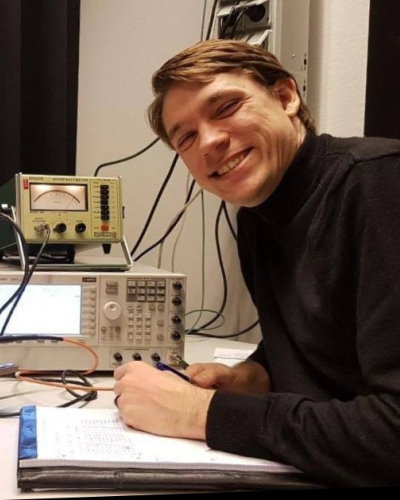
The role of microwaves for global challenges
Microwave technology has permeated society so thoroughly that it has become as ever-present as air. It connects us, entertains us, provides us with information, broadens our perspective, extends our capacity for empathy, feeds our curiosity and destroys the cultural myopias that have gripped us since antiquity. In other words, microwaves play a crucial role in the shaping of modern society, with all its flaws and virtues.
It does the vast field of microwaves no justice to consider it a mere bystander in the global challenges that define our generation. Such reasoning will always treat the infinite potential of microwave technology as a static, perpetually reactionary response to existing global challenges. What we need instead is an exploratory reasoning in which we ask - what are the roles of global challenges for microwaves? Because claiming the spectrum, mastering the impedance and taming the EM waves have provided us with a new sense.
Exploring the most prominent global challenges allows us to reason how they might influence the allocation of resources and attention to the multiple domains of the vast field. And then we can predict how humanitarian, industrial and – the most pressing one - ecological challenges affect the direction of development. It’s our responsibility as engineers, and human beings, to strive for the resolution of all three. They demand new technologies, new industries and new ambitions from the microwave community, and a failure in either robs us of a brighter future.

Claiming the spectrum
One of the most fundamental human aspects is communication. It enables the dissemination of myth, history and knowledge, which has allowed civilization to persist. The need for communication is, and will remain to be, a constant and unstoppable driving force for innovation.
The emergence of 5G defines a critical point in the history of telecom. The choice to operate at high GHz frequencies allows for an astronomical amount of data to be generated, transmitted, received and processed. At the same time, however, the high frequencies result in a substantial reduction of the coverage range of base stations, necessitating their deployment in much greater density than with previous generations. This makes 5G the first system of such massive scale that its coherent management and logistics will require the involvement of AI supervisor assist systems. How consumers will appreciate all this hard work remains to be seen.
The increased density, together with the great number of end-user devices, calls for new insights and advances in interference mitigation and AI-assisted dynamic spectrum management. 5G is redefining not only how radio telecommunications applications are designed and developed, but also how their deployment and long-term maintenance are planned.
When COVID enforced a global lockdown situation, working from home became possible due to the existing robustness, redundancy and capacity of our local, national and global telecom networks. As the world becomes increasingly interconnected, we must guarantee that our communications infrastructure - from base station to satellite – is modular enough to allow easier scaling, maintains low latency and is robust enough to handle worldwide disruptions.
The growing demand for qualified personnel to maintain the infrastructure of today and develop the systems of tomorrow requires extensive promotion and investment in multiple branches of engineering education, especially in the areas of circuit and RF/mm-wave design. Governments and industry must collaborate and the way electrical engineering is taught must be updated and modernized, so that it may better reflect the ideals of Charles Proteus Steinmetz, the father of electrical engineering education.
Last but not least, we must acknowledge the human capacity to harm and destroy. As of writing this essay, it’s nearly a year and a half since Russia’s unprovoked invasion of Ukraine. For eighteen bloody months, millions have been displaced and many thousands of lives have been lost due to Russia’s intentional targeting of civilian infrastructure using long-range missiles. These difficult times make a strong moral argument for the development of long-range high-resolution radars capable of tracking fast-moving objects and more sophisticated electronic warfare systems. Nations that invest now in developing the next generation of these systems won’t have to pay with lives in the future.
Mastering the impedance
There’s a common saying that every generation must face a defining crisis. This has been the case since antiquity and it’s naive to assume the future will be any less interesting. While somber in tone, the saying is also rather soothing in assuming that crises follow some generational etiquette and politely wait in line. The climate crisis we currently face is inter-generational and of such a scale that it will require the complete alignment of policy and industry worldwide. The drive for resolving climate change will influence the field of microwave engineering in one key aspect – mastering the impedance.
All modern economies require power, and the more developed and prosperous a country is, the more power it requires. The vast telecom networks that permeate every nation require equally vast amounts of power. The operational cost of every base station is measured in how many kilowatt-hours they consume to linearize, transmit, receive, hand over, process and thermally manage. Wasting power is a cardinal sin and the biggest offenders are the power amplifiers – an inefficient design dealing with signals that have strong power variations will waste power as heat, which in turn requires even more power to effectively dissipate. And when it comes to transistors, Mother Nature has a great sense of humor, because she’s decided that efficiency is interchangeable with nonlinearity.
Amplifier designs that have full control over the impedances seen by their transistors will achieve great strides in maximizing their efficiency and thus minimizing power loss. Innovative designs such as the Doherty power amplifier, the load-modulated balanced amplifier and the load-modulated linearizer are all attempts to master the impedance and be as efficient as possible. The ability to output greater amounts of power with greater efficiency is vital in reducing the number of telecom base stations and the overall ecological footprint. For the existing 2G, 3G and 4G infrastructure, there are already approximately 421,000 base stations in Europe. If we consider a similar infrastructure scale for 5G, the total daily power consumption across Western Europe alone will be 115 billion watt-hours. A power efficiency improvement of just 1 percent will result in saving more than 1 billion watt-hours every day.

Parallel to the efficiency advancements in the amplifier domains, the transition from omnidirectional antennas to more sophisticated phased arrays allows for extending the limited range that high-frequency 5G systems will have as well as supporting a greater number of end-user devices, thus improving the overall system efficiency. It’s not trivial to design an antenna array that remains properly matched across an entire scanning range while transmitting a bandwidth-limited signal. The main culprit is the mutual impedance shared between the antennas. And yet, the very same mutual impedance is what defines the array’s far-field pattern.
Beyond the realm of telecom, mastering the impedance is crucial in the design and development of better and more sensitive radar systems for remote sensing applications. Firstly, greater power efficiency, minimal mismatch loss and increased directivity all directly translate into better performance for synthetic aperture radars. They’re designed to monitor topographical changes such as soil erosion and ice sheet melting with great accuracy. Remote sensing of animal wildlife has resulted in the development of frequency-diverse, nonlinear, harmonic and intermodulated radar systems, which illuminate a nonlinear reflector with two or more tones of different frequencies. The nonlinear tag is placed on the animal and the resulting nonlinear frequency responses can be accurately detected even in the presence of heavy clutter. Mastering the impedance is critical for the performance of all systems.
Taming the waves
There’s no doubt that industry is faster than academia to engineer new systems. In turn, academia provides the critical insights necessary for the creation and valorization of new technologies that inevitably outperform current ideas or outright circumvent their limitations. The development of, simply put, clearer insights is crucial for broadening the understanding of the possibilities and limitations of microwave technology. Academia optimizes existing concepts and provides new ideas that industry can use (and break in creative ways) to make new products. In that regard, academia should never compete with industry in terms of pure engineering solutions but focus on new and high-risk concepts.
One such industry challenge is the cost and complexity of EM simulations of high-frequency, tightly integrated systems such as antenna arrays, mm-wave ICs and high-power RF transistors. Great efforts are being made to reduce the time and processing power costs by applying AI to ‘guesstimate’ the fields rather than directly solve them. If successful, this approach will allow for much faster EM solutions at some cost to accuracy. For some applications, this approach might not be feasible, such as high-performance radars for defense and space-borne earth observation systems. In other areas, such as consumer devices with 5G, Wi-Fi and Bluetooth connectivity, the benefits in speed, ease of access and lower computational complexity might outweigh the cost in accuracy.
From carefully listening for the faintest of radio signals across the universe to accurately imaging the entire human body, microwave technology has become an extension of our senses. From detecting threats hundreds of kilometers away to bringing the world closer together while remaining invisible to it, microwave technology extends the human will. From helping contain the nuclear might of stars in fusion experiments, to gently interacting with qubits in quantum computers, microwave technology paves the way toward a bright and optimistic future. To think of it as a bystander in global challenges rather than an active participant is to undersell the important role it plays in the modern world.





